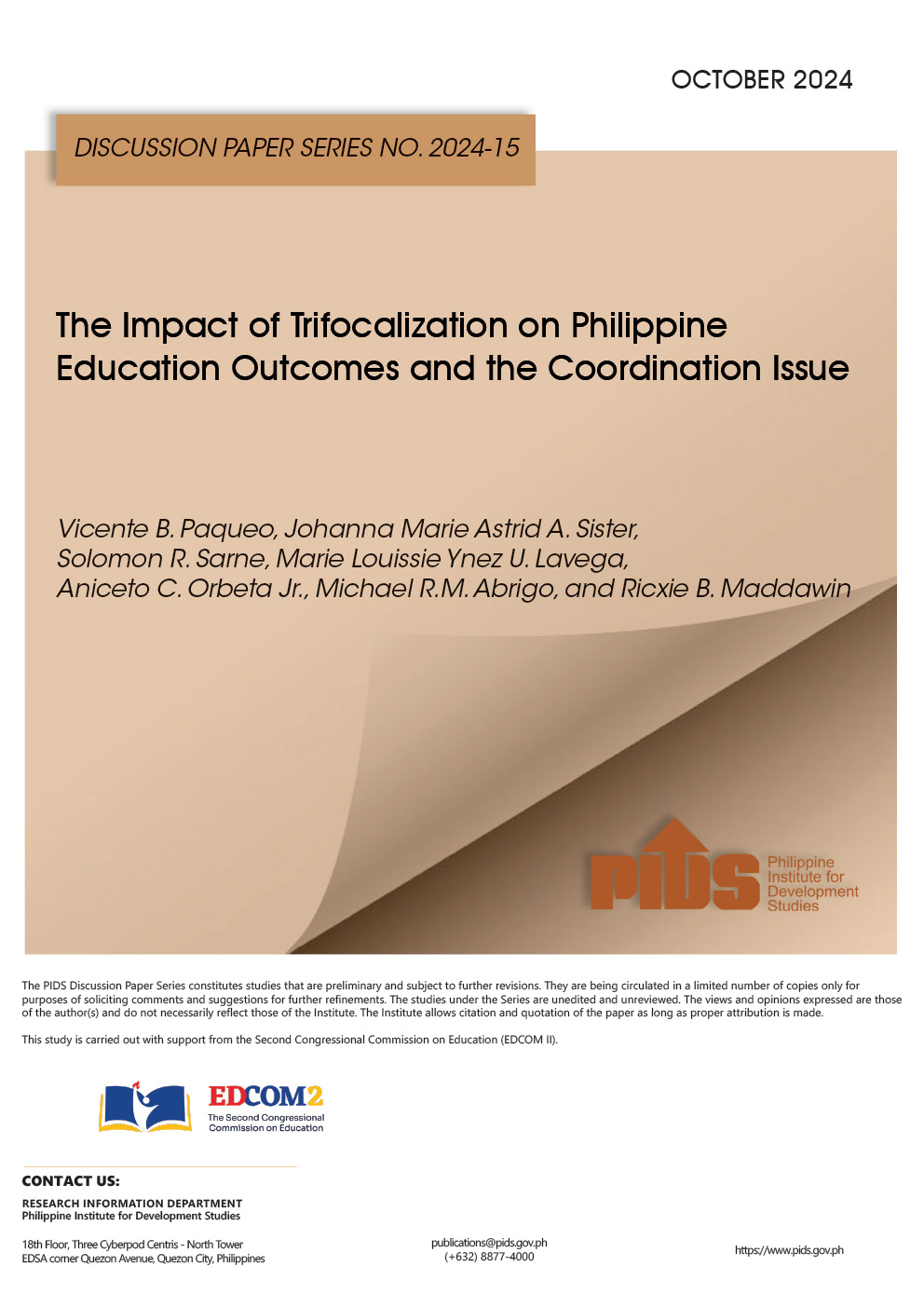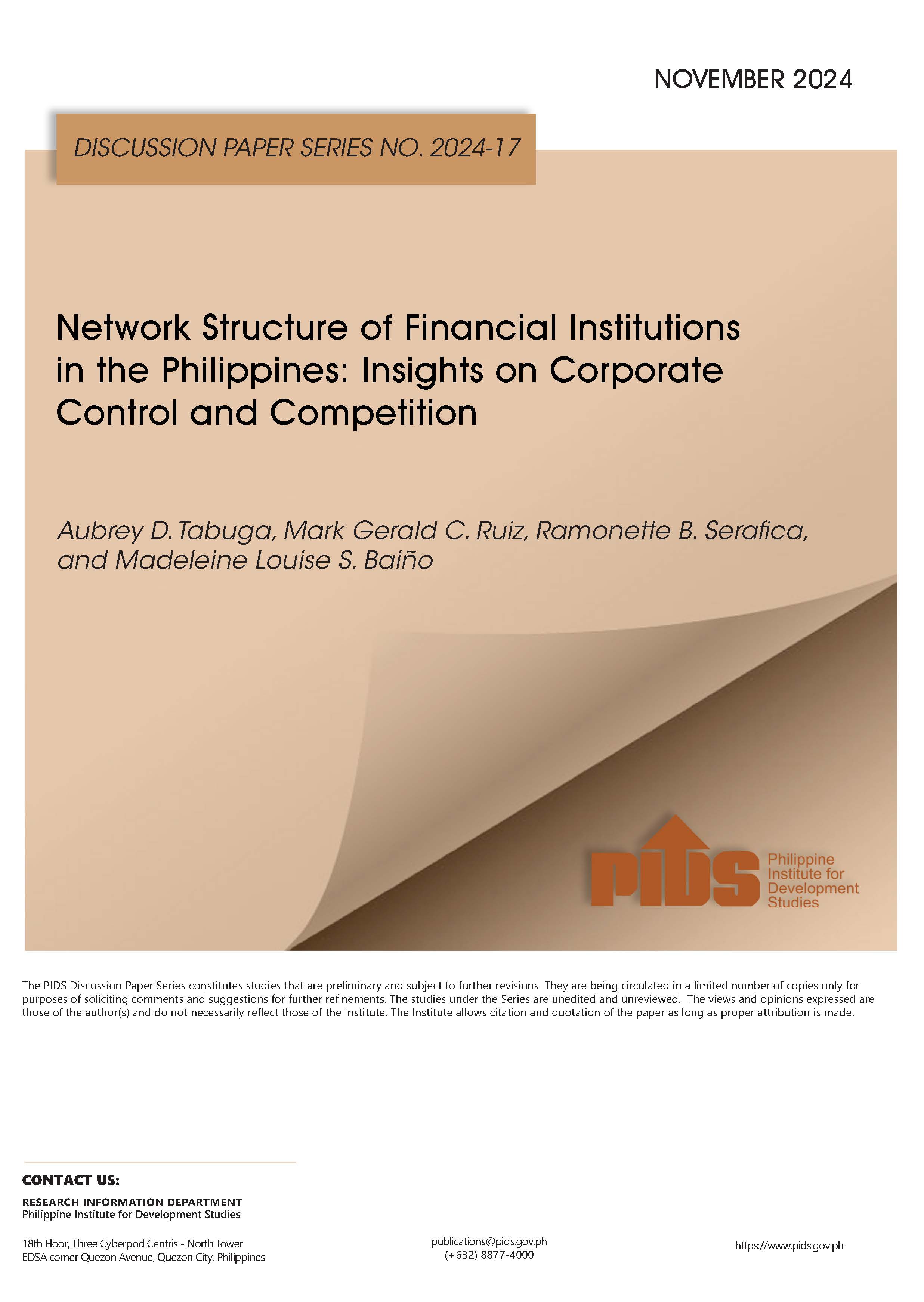The Philippines has performed well in the past few years relative to its peers. It demonstrated great resilience to exogenous shocks that would have undone less capable economies. But will it be able to sustain its positive economic position?
There are positive signs. Revised forecasts put GDP growth in 2015 between 5.7–6 per cent and forecasters expect a strong rebound in the coming year. The government has maintained an official forecast of 6–7 per cent. It expects higher growth in 2016, even when the current administration ends its term of office in June.
Policy reform efforts led to sound macroeconomic foundations and an improved governance framework. Both these factors encouraged investment and business activity as well as a consistent build-up of foreign exchange reserves. Foreign exchange reserves sat at US$80.6 billion at the end of November — enough to cover over 10 months of imports and payments of services and income. And international credit rating agencies have upgraded the Philippines’ credit rating thanks to policy reform.
The Philippines also sustained consumption growth due to substantial remittances from overseas Filipino workers (around US$20 billion) and low inflation. The services sector — mainly the IT Business Process Outsourcing industry — has significantly contributed to output and employment. Strong internal demand will remain as a significant growth driver in the future.
The government has successfully worked for the recent passage of critical reform laws: competition policy, liberalising the banking system, as well as managing and improving transparency of tax incentives. It has strengthened universal health insurance and sustained its conditional cash transfer program which covers millions of poor families and has been designed to improve the education and health status of the poor.
But the issue is whether the economy can sustain this record growth performance amid very challenging times. Certain headwinds could make for rough sailing.
As the Philippine economy integrates more closely with the global and regional economy, external events will have a bigger impact on domestic growth prospects. Weak external demand will have negative impacts on the growth of trade and services. The Philippines had a trade deficit equivalent to US$3.8 billion in October. China’s slowing growth and recession in Japan do not bode well for the economy. Weaknesses among ASEAN’s major trading partners will also have negative spillover effects on ASEAN member states like the Philippines.
Because of this, there is a great risk that trade-led growth may not be a viable option for the Philippines in the immediate future. The Philippines still suffers critical development constraints: infrastructure is inadequate and there are problems with connectivity. It does not help that government spending has been somewhat constricted by procurement processes and bureaucratic inefficiency. Populist legislators have also introduced revenue-eroding measures. The current Aquino administration created significant ‘fiscal space’ — a measure of the government’s room for policy manoeuvre — but this could eventually disappear, much to the regret of the new administration after the national elections in May 2016.
The Aquino administration ends on 30 June 2016 and, according to the Constitution, the current president cannot run for re-election. As in the past, there will be a peaceful and orderly transition to a new government, but the issue of succession provokes several questions. Will the next leader be as committed to policy reform and improved governance as Aquino? Will there be policy reversals because of tremendous pressure from opportunistic politics? Will the next leadership be able to put together an able and responsible team who will stay the course and tackle the more difficult reforms in policies and institutions?
There will not be a lack of contenders in the political market who might put political expediency over difficult reform. This poses a danger to the economy because Philippine politics is already personalist and opportunistic. Many voters don’t vote on issues but are mesmerised by personal charisma and (empty) promises made by political entrepreneurs.
The challenge to the electorate is to select a leader who will not flinch at the sight of difficult reforms. On the contrary, they should have the courage to make bold policy decisions and inspire the government machinery to implement them. The electorate needs to be better informed and educated. The Philippines’ recent growth experience was made possible by reforms in governance and policy.
This year’s success could serve as a reminder to the electorate to choose the right leaders. A rising middle class engendered by continuous growth, returning overseas Filipino workers who have experienced living in well-functioning societies, as well as better informed young voters who actively participate in social media could hopefully constitute the swing vote for a leader with the best interest of the country in mind.
Meanwhile, the current Philippine leadership must fully utilise its remaining political capital to pursue difficult reforms covering trade facilitation and regulatory frameworks. It must continue to invest in both human and physical capital that will raise productivity in the future.
Gilbert M. Llanto is the president of the Philippine Institute of Development Studies.
This article is part of an EAF special feature series on 2015 in review and the year ahead.
There are positive signs. Revised forecasts put GDP growth in 2015 between 5.7–6 per cent and forecasters expect a strong rebound in the coming year. The government has maintained an official forecast of 6–7 per cent. It expects higher growth in 2016, even when the current administration ends its term of office in June.
Policy reform efforts led to sound macroeconomic foundations and an improved governance framework. Both these factors encouraged investment and business activity as well as a consistent build-up of foreign exchange reserves. Foreign exchange reserves sat at US$80.6 billion at the end of November — enough to cover over 10 months of imports and payments of services and income. And international credit rating agencies have upgraded the Philippines’ credit rating thanks to policy reform.
The Philippines also sustained consumption growth due to substantial remittances from overseas Filipino workers (around US$20 billion) and low inflation. The services sector — mainly the IT Business Process Outsourcing industry — has significantly contributed to output and employment. Strong internal demand will remain as a significant growth driver in the future.
The government has successfully worked for the recent passage of critical reform laws: competition policy, liberalising the banking system, as well as managing and improving transparency of tax incentives. It has strengthened universal health insurance and sustained its conditional cash transfer program which covers millions of poor families and has been designed to improve the education and health status of the poor.
But the issue is whether the economy can sustain this record growth performance amid very challenging times. Certain headwinds could make for rough sailing.
As the Philippine economy integrates more closely with the global and regional economy, external events will have a bigger impact on domestic growth prospects. Weak external demand will have negative impacts on the growth of trade and services. The Philippines had a trade deficit equivalent to US$3.8 billion in October. China’s slowing growth and recession in Japan do not bode well for the economy. Weaknesses among ASEAN’s major trading partners will also have negative spillover effects on ASEAN member states like the Philippines.
Because of this, there is a great risk that trade-led growth may not be a viable option for the Philippines in the immediate future. The Philippines still suffers critical development constraints: infrastructure is inadequate and there are problems with connectivity. It does not help that government spending has been somewhat constricted by procurement processes and bureaucratic inefficiency. Populist legislators have also introduced revenue-eroding measures. The current Aquino administration created significant ‘fiscal space’ — a measure of the government’s room for policy manoeuvre — but this could eventually disappear, much to the regret of the new administration after the national elections in May 2016.
The Aquino administration ends on 30 June 2016 and, according to the Constitution, the current president cannot run for re-election. As in the past, there will be a peaceful and orderly transition to a new government, but the issue of succession provokes several questions. Will the next leader be as committed to policy reform and improved governance as Aquino? Will there be policy reversals because of tremendous pressure from opportunistic politics? Will the next leadership be able to put together an able and responsible team who will stay the course and tackle the more difficult reforms in policies and institutions?
There will not be a lack of contenders in the political market who might put political expediency over difficult reform. This poses a danger to the economy because Philippine politics is already personalist and opportunistic. Many voters don’t vote on issues but are mesmerised by personal charisma and (empty) promises made by political entrepreneurs.
The challenge to the electorate is to select a leader who will not flinch at the sight of difficult reforms. On the contrary, they should have the courage to make bold policy decisions and inspire the government machinery to implement them. The electorate needs to be better informed and educated. The Philippines’ recent growth experience was made possible by reforms in governance and policy.
This year’s success could serve as a reminder to the electorate to choose the right leaders. A rising middle class engendered by continuous growth, returning overseas Filipino workers who have experienced living in well-functioning societies, as well as better informed young voters who actively participate in social media could hopefully constitute the swing vote for a leader with the best interest of the country in mind.
Meanwhile, the current Philippine leadership must fully utilise its remaining political capital to pursue difficult reforms covering trade facilitation and regulatory frameworks. It must continue to invest in both human and physical capital that will raise productivity in the future.
Gilbert M. Llanto is the president of the Philippine Institute of Development Studies.
This article is part of an EAF special feature series on 2015 in review and the year ahead.











